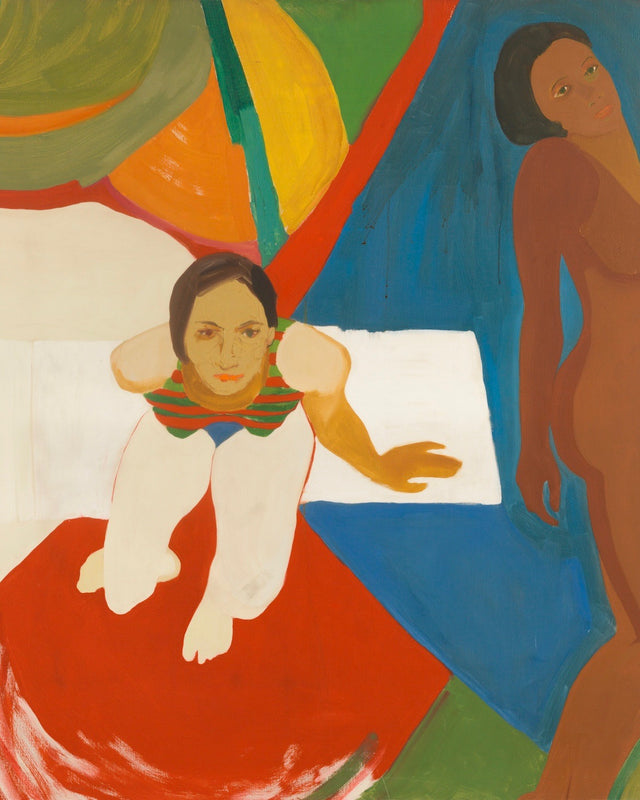The Folklore Remembers Postmodernist Artist Emma Amos
Figurative painter, Emma Amos, was an artist deeply inspired by the major social movements of the mid 20th century. She recently passed away at the age of 83 and will be remembered for creating work that combined painting, print work, and textiles to explore the intersection between femininity and blackness.
Born in Atlanta, Amos grew up learning about and meeting thinkers like W.E.B Du Bois and Zora Neale Hurston. While only 16, the precocious young artist got her start studying at both Antioch College in Ohio and Central School of Art and Design in London. Later, she earned her MFA at NYU during which she was invited to join the collective of artists known as Spiral.
Spiral included such artists as Charles Alston, Romare Bearden, Norman Lewis and Hale Woodruff. They espoused a philosophy of Negritude, which advocated for the collective racial identity of all members of the African diaspora. Although Amos believed joining the group would help propagate her work, she found it suspicious that she was the first and only female member.
While living in New York, Amos was exposed to discrimination of many kinds within the art world. She was frequently turned away from galleries and teaching positions for her age, race, and gender. While Amos remained politically active as exemplified by her work, she felt frustrated by the limitations within the male-centric Black art scene and the white-dominated feminist art scene.
In addition to painting, Amos was also a talented weaver and textile artist, which found a place within the feminist fabric arts movement. In the 1970s she joined feminist collectives Heresies as an editor and The Guerilla Girls, who were known for holding demonstrations while masked.
Throughout her career, she was very aware of her particular place as a Black woman in art. She frequently used Black female figures as the subjects of portraits in order to challenge the Eurocentric conventions of portraiture. Bodies are constantly floating or falling through space in her work, perhaps a commentary on the tenuous position Black women hold in society. She once admitted, “It’s always been my contention that for me, a black woman artist, to walk into the studio is a political act.”
Despite her prolific career, Amos remained relatively unknown until she was featured in the Tate Modern's “Soul of a Nation: Art in the Age of Black Power” and in “We Wanted a Revolution: Black Radical Women, 1965–85,” by the Brooklyn Museum. In 2004, she was given a lifetime achievement award by the Women’s Caucus for Art.







Written by Natalie Jarrett

